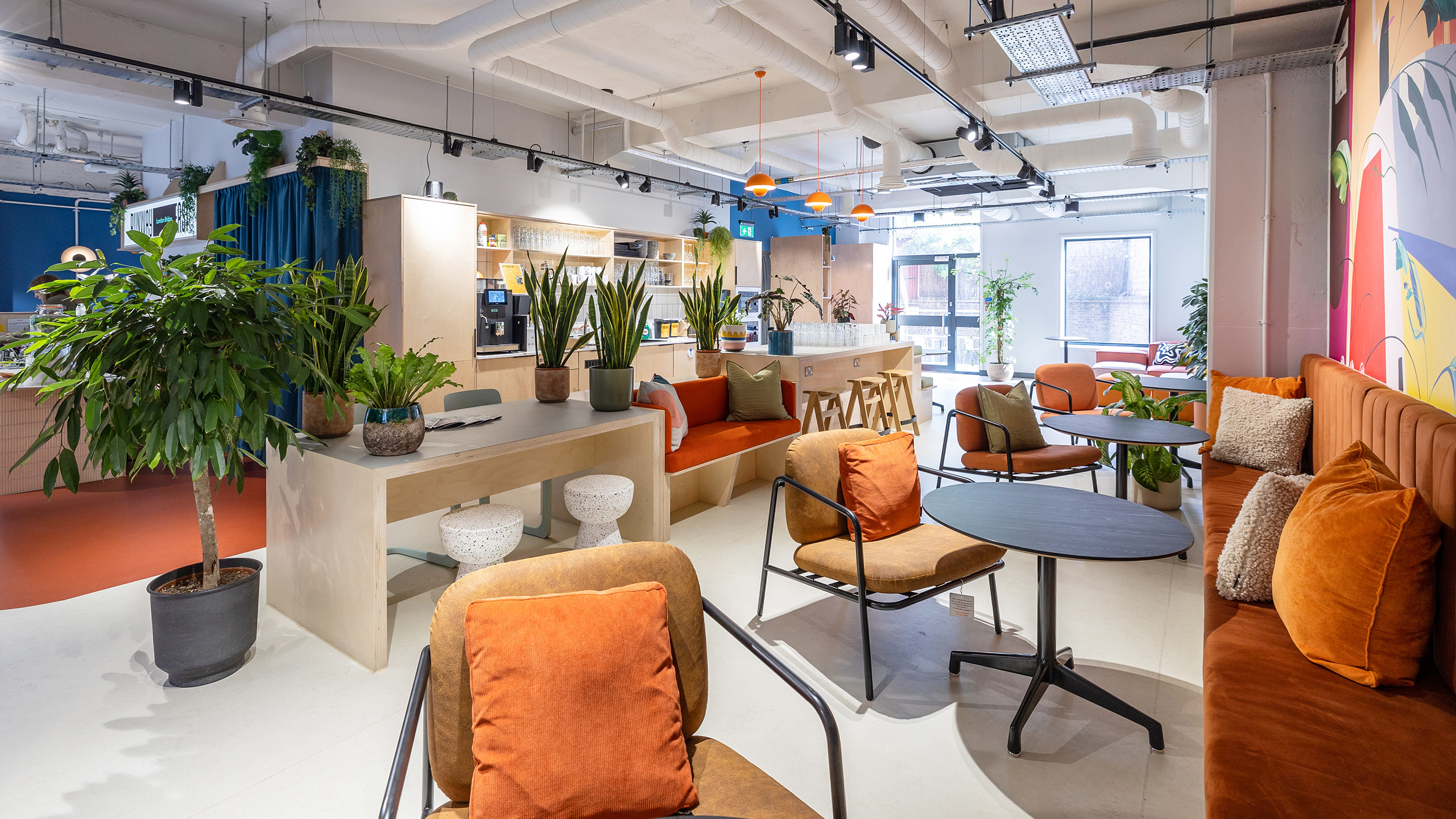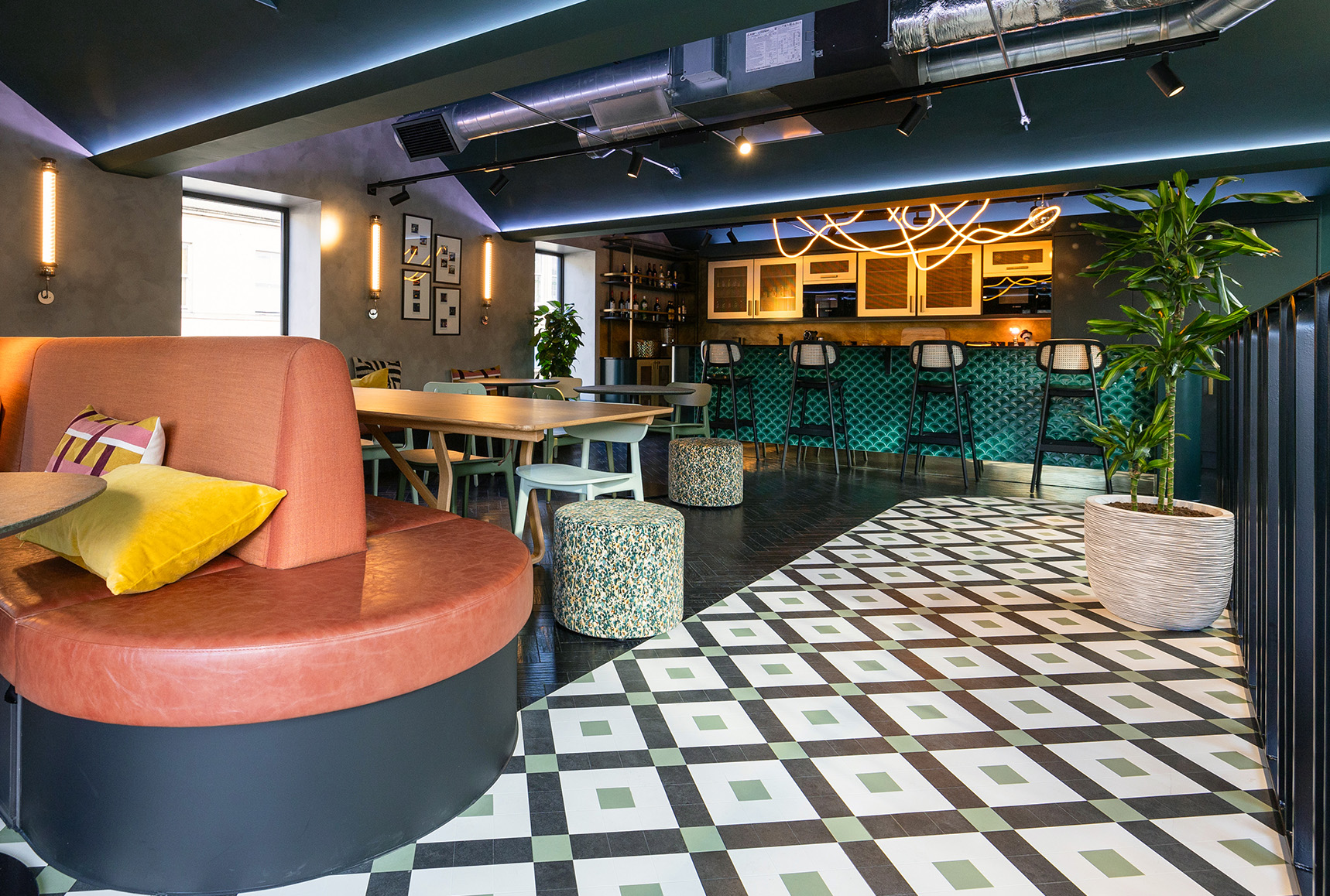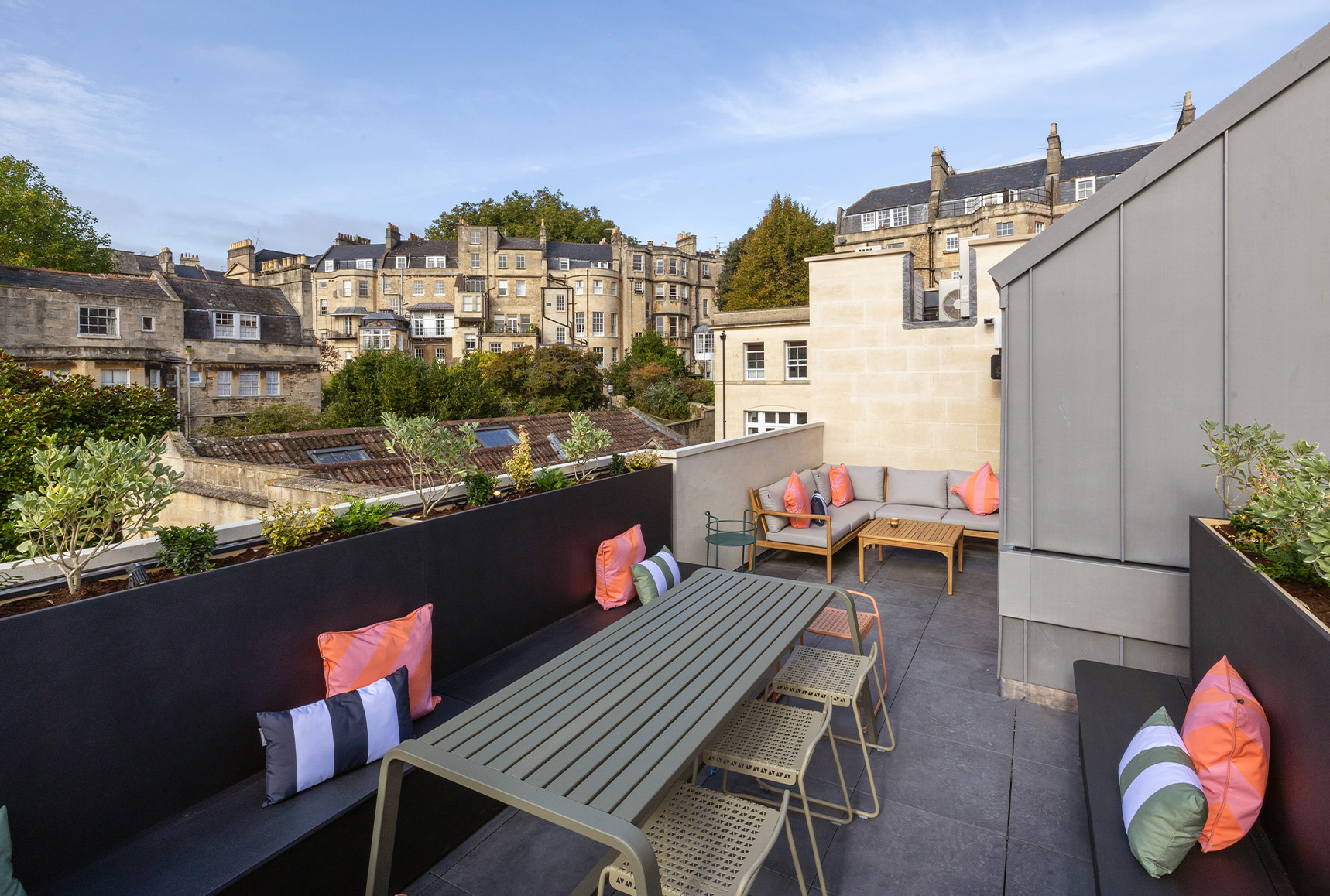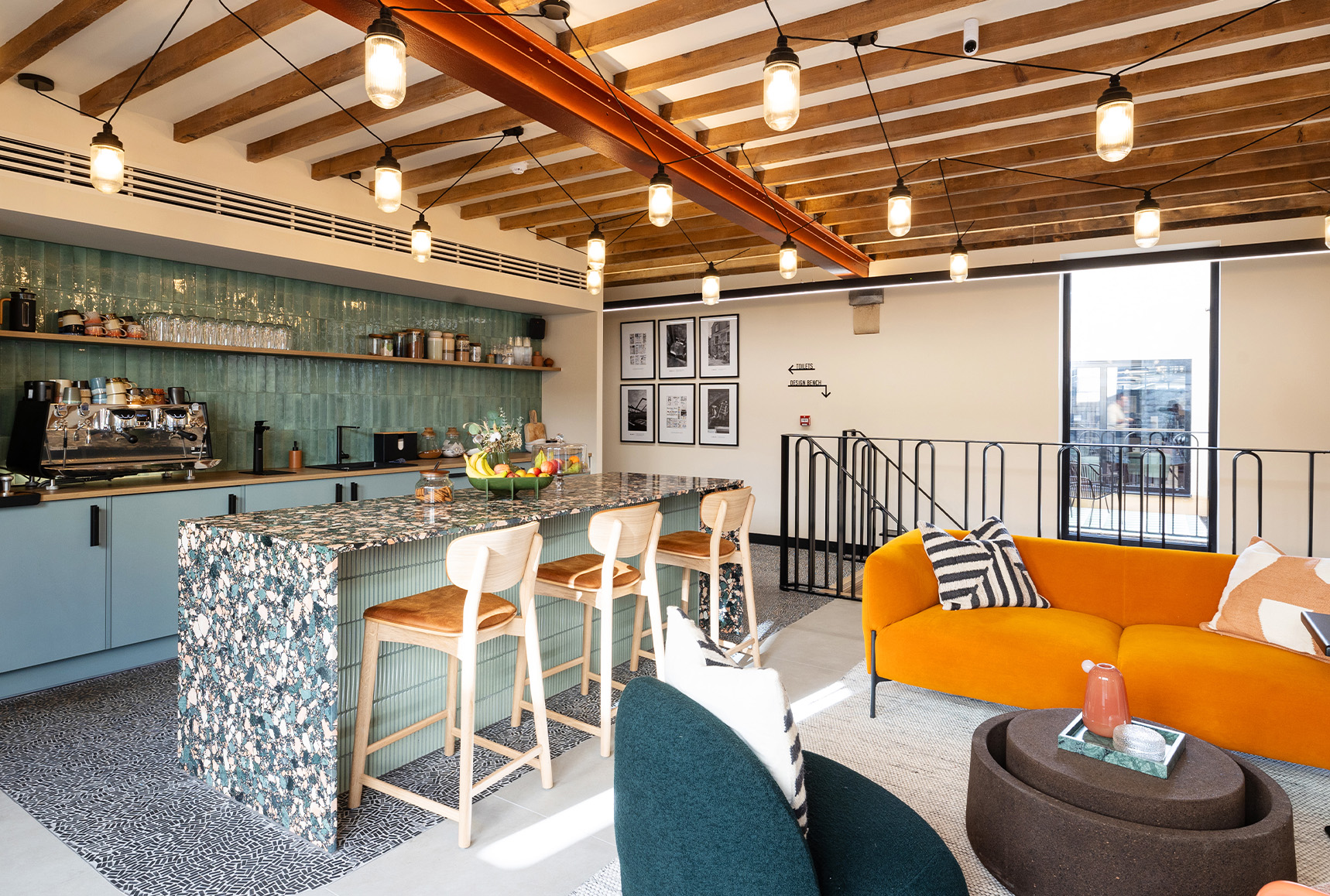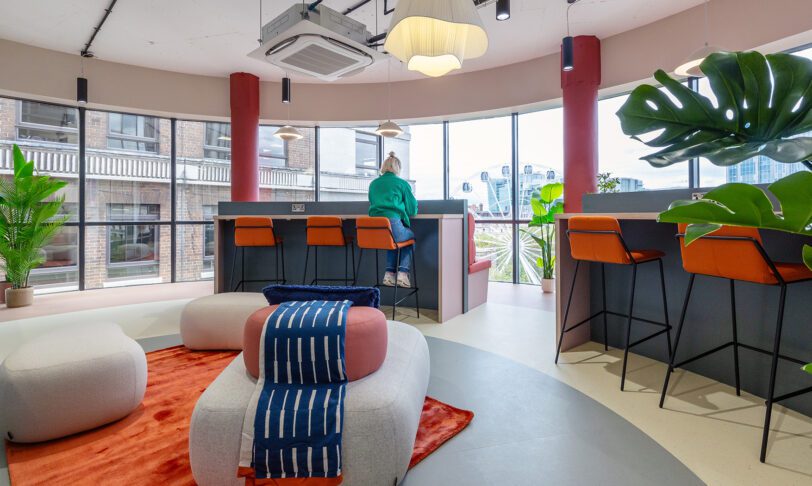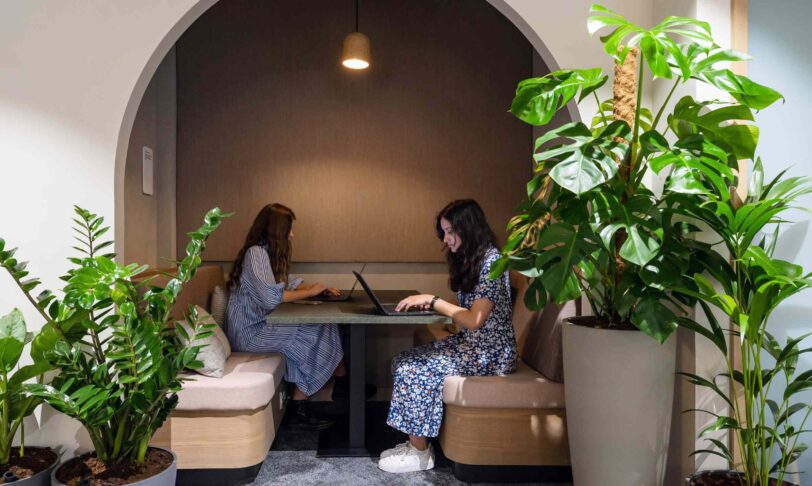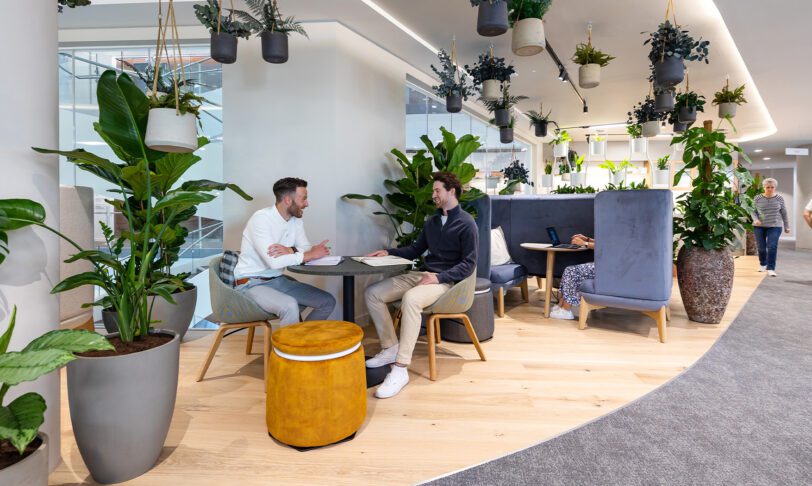The Interaction guide to hybrid office design
To say that hybrid work has become indispensable to modern workplace culture is quite an understatement. By combining the advantages of remote and in-person office interactions, organisations can create flexible, dynamic and stimulating work environments.
Some companies are making their expectations clear about people returning to the office at least for a couple of days a week, with prominent examples including Amazon and Zoom (ironically). But is this something that employees want? While for many, the days of being in the office 5 days a week are long gone, a survey from Accenture of 9,000 workers found that 83% of them preferred a hybrid working environment.
If companies want people to give up home comforts to slog it to the office a few days a week – they need to offer them something genuinely beneficial and enticing. This often takes the form of a ‘destination’ office – a space that provides a unique experience with amenities that cannot be replicated at home. These types of spaces are often optimised for hybrid working, and this article serves as a comprehensive guide for building these unique and enriching spaces – with examples of a hybrid office floor plan and layout designed by our in-house experts!
What exactly is a hybrid office?
A hybrid office is a contemporary and adaptable workspace that has been crafted to support both on-site and remote work. It blends the advantages of conventional office space with the convenience and flexibility of remote work. Hybrid working gives employees the freedom to work based on personal preferences and requirements, be it in the office or the comfort of their own homes. After all, if you can offer people the best of both worlds, why wouldn’t you?
Understanding hybrid work models
It can take a bit of trial and error to find that perfect balance between remote and on-site working, so organisations should try the following models for size to determine which one works best:
- Standard hybrid model: In the standard hybrid model, people enjoy the flexibility of splitting their time equally between working from home and collaborating in the office. Ideally, this should result in an even distribution of the combined benefits of remote and office work.
- Office-first hybrid model: The office-first hybrid model prioritises the office as the primary workspace, but allows for a few days of remote work during the week. People therefore have the choice to work from home when necessary while still maintaining a strong connection to the office environment.
- Remote-first hybrid model: In the remote-first hybrid model, the majority of work is conducted remotely, with occasional visits to the office for crucial meetings, team collaborations, or social interactions. Employees can work from anywhere while still fostering a sense of workplace community and connection with their peers.
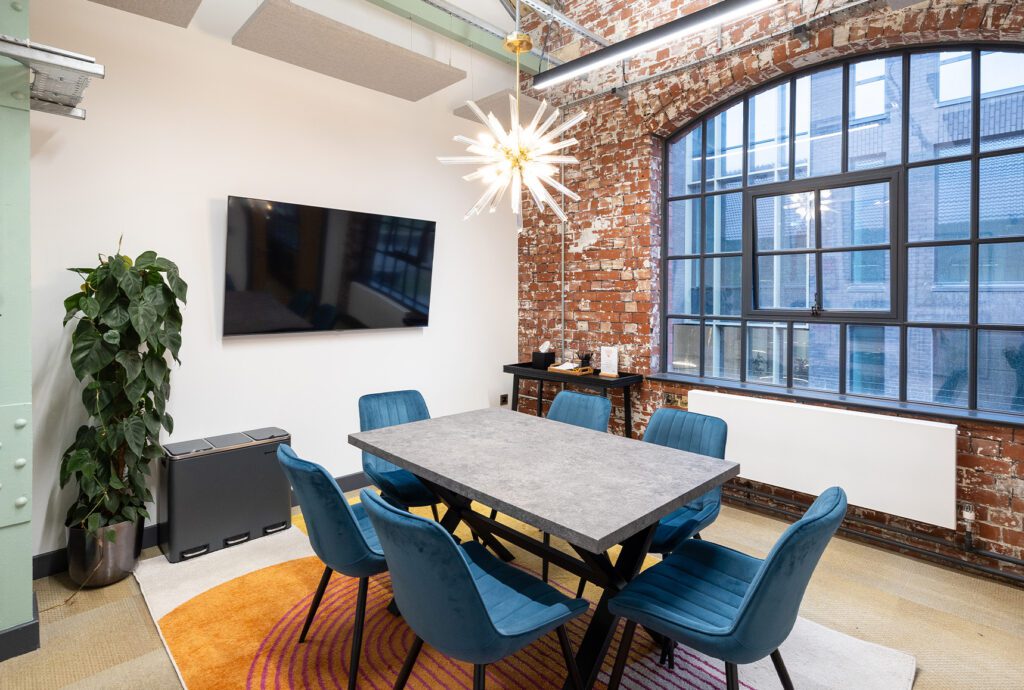
Are hybrid offices more innovative?
In a study from VMWare, 75% of respondents believed that companies with an anywhere-work policy were more innovative. When employees have more choice over the environments they work in, they have a better work-life balance – which translates into higher levels of job satisfaction and overall wellbeing. When combined with the in-person collaboration and diversity of thought that comes with working in the office, it’s clear how hybrid workplaces can stimulate creative and innovative thinking.
Are hybrid offices more productive?
When we think of productivity as people completing meaningful tasks to a high standard (while maintaining a healthy work-life balance), it makes sense that hybrid offices are more productive. According to a recent McKinsey survey, 58% of employees found that switching to a hybrid work model increased their productivity. With hybrid working, people can opt to work in specific environments where they feel at ease, enriched and able to perform at their best.
Do hybrid work environments increase employee engagement?
According to a Gallup poll, employees who allocate 60% to 80% of their time working remotely exhibit the highest levels of engagement. When people are trusted to tailor the way they work to their unique needs, they are much more likely to feel motivated and satisfied in their role. This means that they want to create a meaningful and tangible contribution to their organisation’s long-term goals.
Expert tips for hybrid office design and layout
There’s more to successful hybrid working than simply gathering everyone around a single screen for a call on Microsoft Teams. Without a cohesive and well thought-out hybrid workplace strategy, your team could suffer from a range of indignities. These can range from constant interruptions in calls, connectivity issues, double-booking and scheduling conflicts. These types of issues need to be considered from the start of the design process.
Furthermore, as we mentioned before, autonomy and choice are recurring themes in this article!
A well-designed hybrid workspace grants people control over a range of office elements, from lighting and temperature to varying levels of privacy. Furthermore, offering diverse workspace options that cater to different working styles and task requirements can significantly bolster productivity and overall satisfaction.
By considering these factors, organisations can establish a hybrid environment where everyone can thrive and have their individual needs met. To help you get started, our team has put together some action points for successful hybrid office design:
Accommodate flexible and adaptable working wherever possible
Hybrid offices can accommodate a wide array of workplace activities with minimal effort, from focused work and breakout sessions to collaborative brainstorming between on-site and remote employees. This can be achieved with workstations that can be adapted for solo and group working, as well as broken plan layouts that help employees to transition between different modes of work.
Does the concept of a broken plan layout pique your interest? One of the most innovative parts of this type of layout is the use of subtle design features to distinguish between different working spaces. Opting for colourways, varying carpet textures or even overhead shapes (such as high or low bulkheads) can help divide up your workspace without placing physical barriers between teams.
Ultimately, hybrid offices should be designed with versatility and flexibility in mind, allowing organisations to capture the range of environments that remote workers are accustomed to.
Make sure you have the proper technology in place
Technology is the linchpin of a successful hybrid workplace. If you don’t get it right, communication and collaboration will be like pushing treacle up a hill. For instance, having best-in-market conferencing facilities will ensure that remote employees can insert themselves into any office-based activities. These need to be reinforced by digital tools for sharing information, as well as managing projects and interactions across teams – regardless of their proximity. Finally, cloud-based booking systems will allow you to avoid the chaos that ensues when remote employees decide to come into the office, only to find that there’s not enough space…
Design spaces that encourage and facilitate collaboration
Innovative hybrid office design encompasses various features, including breakout areas for relaxation and informal meetings, dedicated booths for focused group work, and the flexibility of hot-desking. These help to foster collaboration, cultivate a sense of community, and inspire meaningful interactions. They not only entice employees back to the office, but they often make for more productive and creative collaboration between on-site and remote employees.
Create dedicated zones for employee wellbeing
One of the biggest appeals of remote working is that people can complete tasks in a hospitable and familiar environment. This has inspired many organisations to create spaces for unwinding and socialising, often incorporating design features such as serene lighting, comfortable furnishings and biophilic design. These spaces draw people to the office by giving them opportunities to recharge, away from the responsibilities of both work and home life.
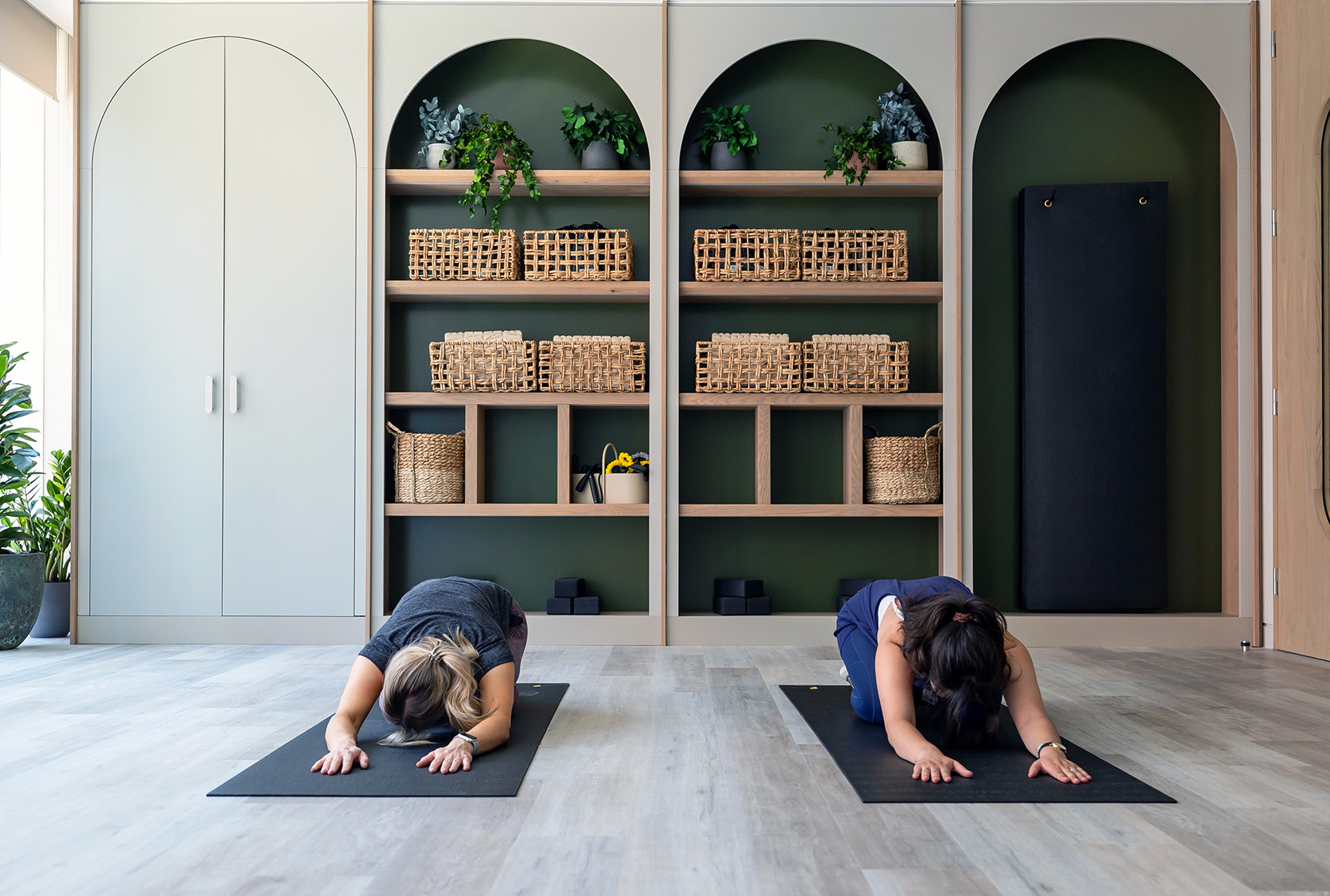
Think about how your furniture can help facilitate hybrid working
In a recent round-up of design news, The Guardian highlighted how virtual meeting pods can make collaboration between remote and on-site employees as seamless as possible. These pods use innovative projection technology for an uncanny take on face-to-face interaction. While this might be a bit too sci-fi for people’s tastes (not to mention budgets!), it shows the potential of furniture in a hybrid workspace. Meeting pods, for instance, can be equipped with interactive whiteboards and high-resolution screens so ideas can be brought to life in real-time. On a smaller scale, investing in movable workstations and configurable desks can help adapt your office to fit a multitude of work styles and collaboration requirements. While we often define ‘modern’ office furniture in terms of aesthetics – these examples show it’s not a case of style over substance.
